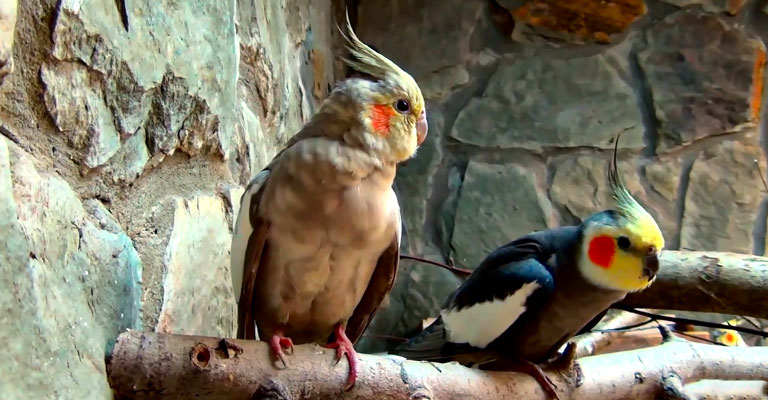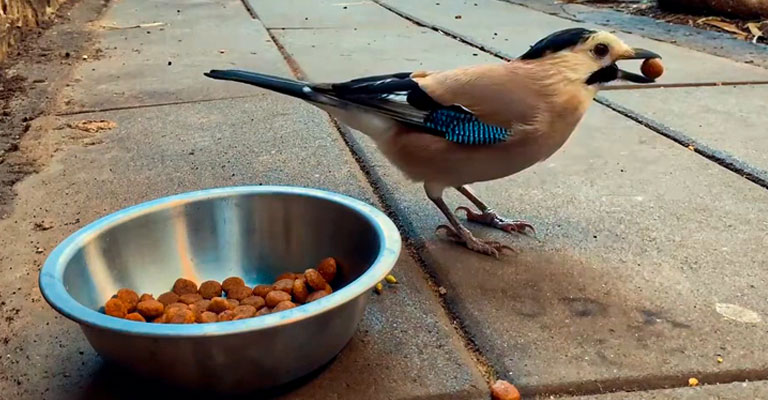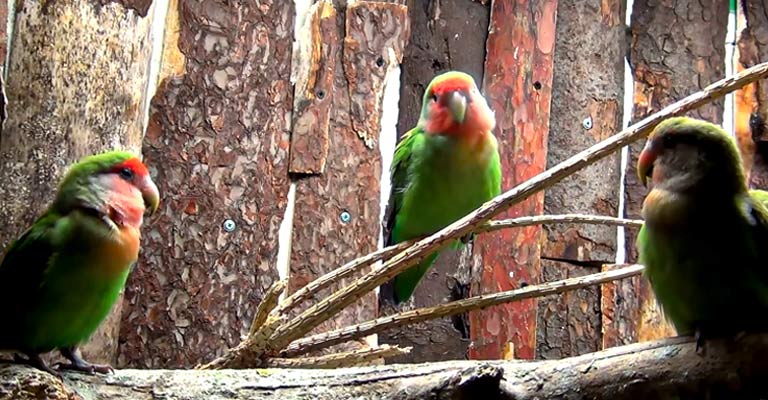Our furry companions deserve every meal without the interference of uninvited feathered guests. Whether you feed your dog outdoors or have encountered the occasional avian intrusion indoors, the challenge of keeping birds away from your dog’s food is a common one.
In this blog post, we’ll explore effective strategies to safeguard your dog’s meals and maintain a peaceful dining experience for your four-legged friend. Birds are opportunistic feeders, and the scent of dog food can lure them in from miles away.
However, with the right techniques, you can strike a balance between caring for the needs of your dog and respecting the local avian population. From clever deterrents to training tips, we’ve got you covered. So, stay focused.

Why Do Birds Target Dog Food?
Birds may target dog food for several reasons. First, dog food often contains grains and protein, which are appealing to many bird species. It provides a convenient and energy-rich food source for them.
Second, spilled or leftover dog food can be easily accessible in outdoor feeding areas. Birds are opportunistic feeders and will take advantage of readily available food, especially when it’s in an open and accessible location.
Additionally, birds might be attracted to the scent of dog food, as it can carry over a distance, leading them to investigate the source.
Lastly, some birds may pick at dog food out of curiosity or because they observe dogs eating it. However, it’s essential to monitor such interactions to ensure the safety of both the birds and the pets, as certain dog foods may not be suitable for wild birds due to their nutritional needs.
What Type of Dog Food Birds Usually Eat?
Birds typically do not consume commercial dog food as a primary part of their diet because it is not tailored to their nutritional needs. Instead, birds primarily eat a diet of seeds, insects, fruits, and other natural foods. However, they may occasionally sample or scavenge dog food if it’s available.
Wild birds have specific dietary requirements that vary by species, so the types of foods they eat can differ. Here are some common foods that various bird species might consume:
Seeds
Many birds, such as sparrows, finches, and pigeons, eat a variety of seeds like sunflower seeds, millet, and safflower seeds.
Insects
Insectivorous birds, like robins and warblers, rely heavily on insects and other small invertebrates as a protein source.
Fruits
Birds like thrushes, orioles, and tanagers consume fruits, berries, and nectar as part of their diet.
Nuts
Some larger birds, including woodpeckers and jays, may feed on nuts and acorns.
Grains
Doves and pigeons may eat grains like corn and wheat, though they prefer other food sources.
It’s important to note that while birds might sample dog food if they encounter it, it’s not a suitable or balanced diet for them.
Is Dog Food Harmful for Birds?

Yes, dog food can be harmful to birds for several reasons:
Nutritional Imbalance
Dog food is formulated to meet the dietary needs of dogs, not birds. It lacks the essential nutrients, vitamins, and minerals that birds require for their health.
High Protein Content
Some dog foods contain a high protein content, which can be excessive for most bird species. Excess protein can lead to health problems in birds.
Lack of Fiber
Bird diets typically require a significant amount of fiber, which is usually lacking in dog food. A lack of fiber can lead to digestive issues in birds.
High Sodium Content
Dog food often contains high levels of sodium, which is harmful to birds. Excessive sodium can lead to dehydration and kidney problems.
Artificial Additives
Many dog foods contain artificial additives, flavors, and preservatives that are not suitable for birds and may be harmful to their health.
Potential Contaminants
Dog food may be exposed to contaminants, such as mold or bacteria, that can be harmful to birds if consumed.
Displacement of Natural Diet
Birds that consume dog food may neglect their natural diet, which can lead to nutritional deficiencies and overall health problems.
Unnatural Behavior
Encouraging birds to eat dog food can disrupt their natural foraging behaviors, which are essential for their physical and mental well-being.
While birds may occasionally sample dog food, it is not a suitable or safe long-term dietary option for them. Providing birds with appropriate bird feed is essential to ensure their health and well-being.
How to Keep Birds Away From Dog Food?

Keeping birds away from dog food requires some simple strategies to protect both the birds and your pet’s food. Here are some effective ways to accomplish this:
Use Covered Containers
Store your dog’s food in airtight, covered containers that birds cannot access. This prevents birds from directly reaching the food.
Scheduled Feeding
Establish a regular feeding schedule for your dog. Put out their food only during meal times and remove any uneaten portions promptly to minimize the time it’s available for birds.
Elevate Food Bowls
Place your dog’s food bowls on an elevated platform or stand. This makes it more difficult for birds to reach the food.
Feed Indoors
If possible, feed your dog indoors. This eliminates the opportunity for birds to access the food.
Use Bird Feeders
If you have bird feeders in your yard, place them away from your dog’s feeding area to minimize bird traffic near the dog food.
Scare Tactics
Employ scare tactics like motion-activated sprinklers or visual deterrents such as reflective objects (CDs, foil strips) to discourage birds from approaching the dog food.
Supervision
When your dog is eating outside, supervise them to deter birds from approaching. Scaring away birds when they appear can reinforce that the area is not safe for them.
Clean Up Spills
If your dog spills food on the ground, promptly clean it up to remove the temptation for birds.
Choose an Enclosed Feeding Area
If feasible, create an enclosed or screened feeding area for your dog to prevent access by birds.
Use Pet-Friendly Deterrents
Some pet stores offer pet-friendly bird repellents that are safe for dogs. These products emit sounds or scents that birds find unpleasant.
Remember to balance your efforts to deter birds with the well-being of the birds themselves. It’s important to find humane and non-lethal methods to keep them away from your dog’s food.
Tips for Train a Bird Not to Eat Dog Food?

Training a bird not to eat dog food can be a bit challenging, as it involves modifying the bird’s behavior. Here are some tips to help you train a bird to stay away from dog food:
Consistency
Consistency is key in any training process. Be persistent and patient as you work with the bird.
Observe Bird Behavior
Pay attention to when the bird is most likely to approach the dog’s food. Understanding their patterns can help you target your training efforts effectively.
Remove Temptation
When not actively training, make sure dog food is out of the bird’s reach. Use covered containers or feed your dog indoors.
Positive Reinforcement
Reward the bird when it stays away from the dog food. Use treats or praise to reinforce the desired behavior.
Training Sessions
Set up short training sessions with the bird. During these sessions, offer treats or positive reinforcement when it avoids the dog food.
Use a Command
Teach the bird a command or cue that indicates it should stay away from the dog food. Consistently use this cue during training.
Start with Distance
Initially, place the bird at a safe distance from the dog food and gradually decrease the distance as it learns to stay away.
Redirect Attention
Whenever the bird approaches the dog food, gently redirect its attention to something else, like toys, perches, or a designated feeding area.
Consistent Training Environment
Ensure that everyone in your household is on the same page and follows the same training guidelines.
Patience
Training birds can take time, so be patient and don’t get discouraged if progress is slow.
Safety
Always prioritize the safety and well-being of your bird and dog. Avoid any harsh training methods or punitive actions that could harm them.
Consult a Professional
If you’re having difficulty with the training process, consider consulting a professional animal trainer or behaviorist who specializes in birds for personalized guidance.
Remember that some birds may be more stubborn or have stronger instincts to investigate food, so the training process may vary from bird to bird. With patience and consistent effort, you can help your bird learn to stay away from dog food.
Tips for Indoor Dog Feeding
Indoor dog feeding comes with its own set of considerations to ensure your dog’s health and cleanliness while maintaining a tidy living environment. Here are some tips for indoor dog feeding:
Designated Feeding Area
Choose a specific spot in your home for feeding your dog, such as the kitchen or a laundry room. This helps contain any mess and creates a routine for your dog.
Use Elevated Bowls
Elevated food and water bowls can be more comfortable for your dog and may help prevent spills.
Regular Feeding Schedule
Establish a consistent feeding schedule, typically two meals a day for adult dogs. Stick to the same times each day to help regulate your dog’s digestion.
Proper Portion Control
Measure your dog’s food to ensure you’re providing the correct portion size according to their age, size, and activity level. This helps maintain a healthy weight.
High-Quality Dog Food
Choose a high-quality dog food that meets your dog’s nutritional needs. Consult with your veterinarian if you’re unsure about the best food for your dog.
Fresh Water
Always provide access to fresh, clean water for your dog. Change the water daily to ensure its cleanliness.
Supervise Mealtime
Stay with your dog while they eat to monitor their behavior and ensure they don’t gulp down their food too quickly.
Slow Feeder Bowls
If your dog tends to eat too fast, consider using a slow feeder bowl to encourage slower eating and prevent digestive issues.
Crate Training
If you have a dog crate, you can feed your dog inside it to prevent it from wandering off with food or creating a mess.
Clean Up Spills
Promptly clean up any spilled food or water to prevent ants, pests, and odors.
Food Storage
Store your dog’s food in an airtight container to keep it fresh and prevent pests from getting to it.
Routine and Training
Use mealtime as an opportunity for training and reinforcement of commands like “sit” or “stay.” This mental stimulation can be beneficial.
Allergies and Special Diets
If your dog has food allergies or specific dietary requirements, consult your veterinarian for guidance on suitable food options.
Regular Vet Check-Ups
Schedule regular vet check-ups to monitor your dog’s weight and overall health. Your vet can adjust the feeding plan if necessary.
Dispose of Leftovers Safely
If your dog doesn’t finish their meal, discard any leftover food to prevent spoilage.
Remember that maintaining a clean and controlled feeding environment is essential for your dog’s health and well-being. It also helps prevent potential messes and odors in your home.
FAQs
To deter birds, consider using an elevated dog food stand, covering the food bowl with a lid or mesh cover, and removing uneaten food promptly. You can also place reflective objects or use motion-activated sprinklers to discourage bird visits.
Yes, there are pet-friendly bird repellents available. These emit sounds or scents that birds find unpleasant, deterring them from the food area. Ensure the repellent is safe for both your dog and the birds.
While some dogs naturally guard their food, you can reinforce this behavior with training. Teach commands like “leave it” and “stay” to deter birds. However, always supervise to prevent aggressive behavior and ensure safety.
Start by cleaning the feeding area to remove any food remnants. Then, implement bird deterrent methods, like covered bowls or reflective objects. Be patient; it may take time for birds to learn to avoid the area.
Yes, consider feeding your dog indoors or in an enclosed area like a screened porch. This eliminates bird access to the food and ensures your dog’s mealtime remains uninterrupted.
Wrapping Up
Incorporating these strategies into your daily routine can make mealtimes a breeze for both your dog and your household’s feathered visitors.
Remember, it’s essential to protect your dog’s food from birds while ensuring the well-being of both animals.
With a little effort and patience, you can enjoy peaceful and mess-free doggy dinners while keeping your local bird population happy and healthy. Thank you for being with us.